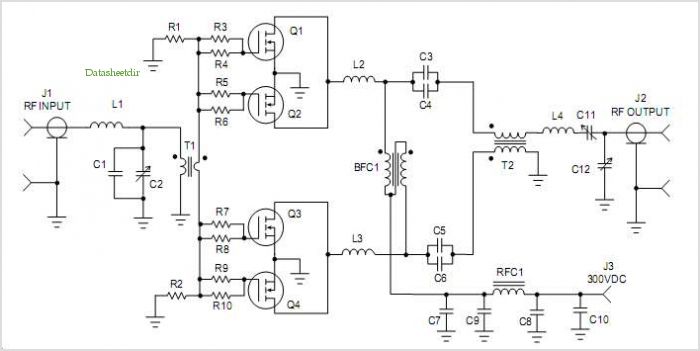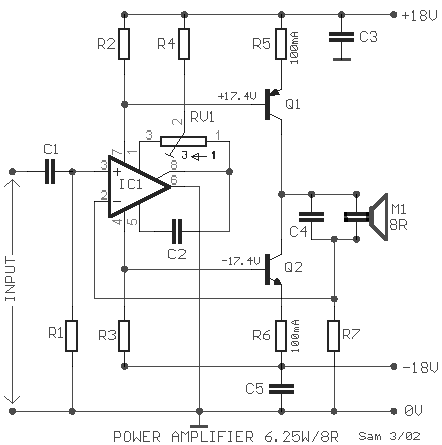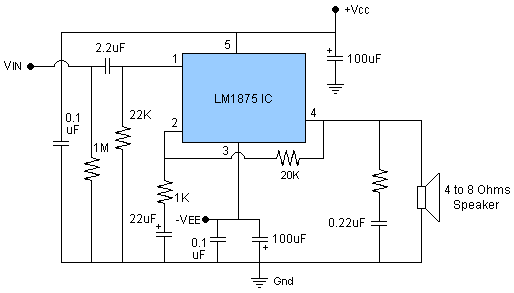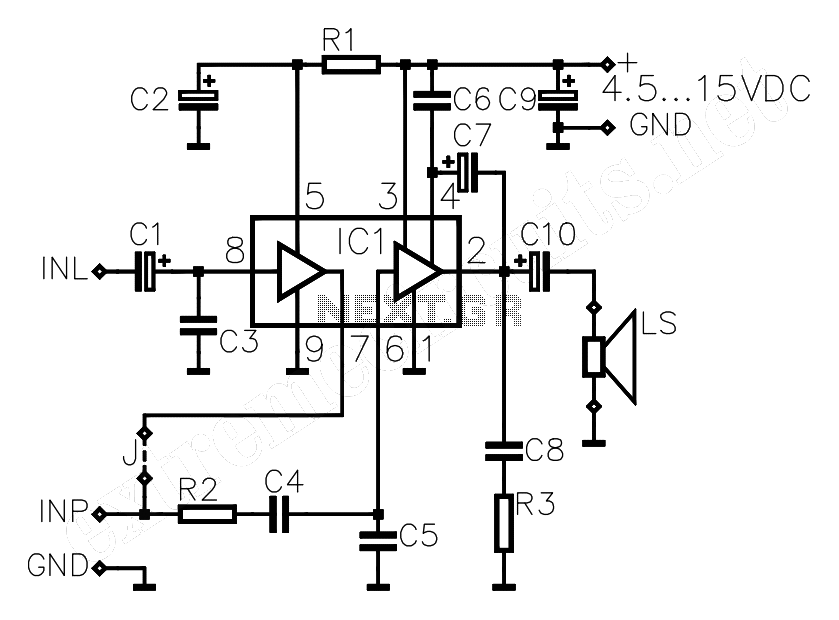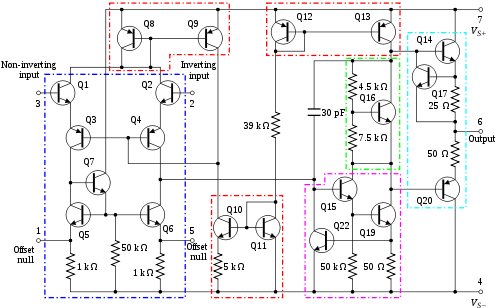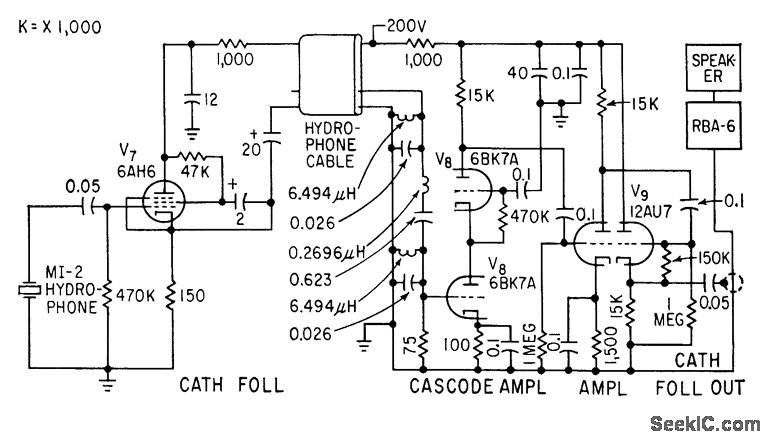
Servo motor drive amplifier
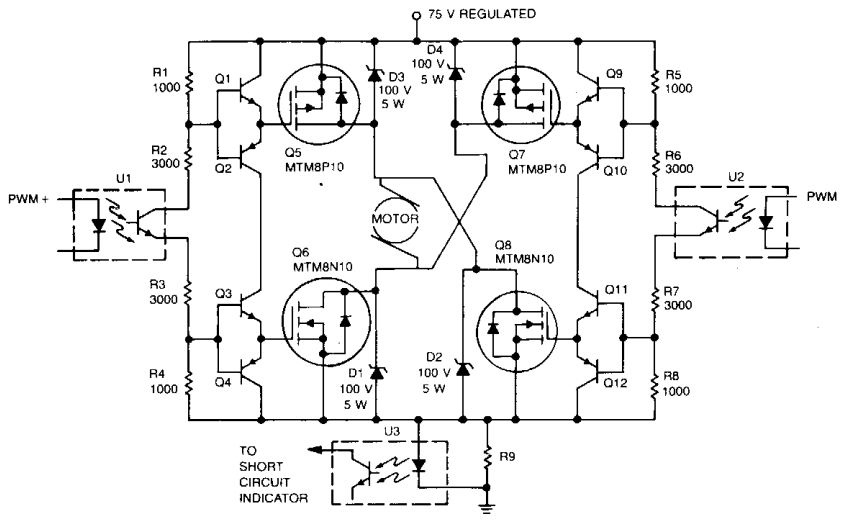
Digital integrated circuits (ICs) and opto-isolators supply the drive for this TMOS servo amplifier, leading to a reduction in analog circuits and minimizing drift. The fast and consistent turn-on and turn-off characteristics facilitate accurate analog output results directly from the digital signal, eliminating the necessity for analog feedback. An H-bridge configuration is utilized for the servo amplifier, which receives complementary PWM inputs from digital control circuits. These PWM inputs are transmitted through opto-isolators.
The TMOS servo amplifier leverages digital ICs to enhance performance and reliability, reducing the complexity often associated with traditional analog circuits. The use of opto-isolators serves a dual purpose: it provides electrical isolation between the digital control signals and the high-power components of the amplifier, while also ensuring that the PWM signals are transmitted with minimal distortion. This isolation is crucial in applications where noise immunity is paramount, as it prevents ground loops and other interference from affecting the performance of the servo system.
The H-bridge configuration is integral to the operation of the servo amplifier, allowing for bidirectional control of the servo motor. This configuration consists of four switches arranged in a bridge layout, enabling the direction of current flow through the motor to be reversed, thus controlling its rotational direction. The complementary PWM inputs ensure that the switches are activated in a manner that optimizes efficiency and minimizes heat generation, which is critical in high-performance applications.
By utilizing fast turn-on and turn-off characteristics, the servo amplifier can respond swiftly to changes in the control signal, thereby achieving precise control over the motor's position and speed. This responsiveness is essential for applications requiring high accuracy and rapid adjustments, such as robotics, CNC machinery, and automated systems.
Overall, the integration of digital ICs, opto-isolators, and a well-designed H-bridge configuration in the TMOS servo amplifier results in a robust and efficient solution for modern servo control applications, providing reliable performance with reduced complexity and improved accuracy.Digital ICs and opto-isolators provide the drive for this TMOS servo amplifier, resulting in fewer analog circuits and less drift. Fast and consistent turn-on and turn-off characteristics also enable accurate analog output results directly from the digital signal without the need for analog feedback.An `H` bridge configuration is employed for the servo amplifier,which obtains complementary PWM inputs from digital control circuits.The PWM inputs are applied via opto-isolators
🔗 External reference
The TMOS servo amplifier leverages digital ICs to enhance performance and reliability, reducing the complexity often associated with traditional analog circuits. The use of opto-isolators serves a dual purpose: it provides electrical isolation between the digital control signals and the high-power components of the amplifier, while also ensuring that the PWM signals are transmitted with minimal distortion. This isolation is crucial in applications where noise immunity is paramount, as it prevents ground loops and other interference from affecting the performance of the servo system.
The H-bridge configuration is integral to the operation of the servo amplifier, allowing for bidirectional control of the servo motor. This configuration consists of four switches arranged in a bridge layout, enabling the direction of current flow through the motor to be reversed, thus controlling its rotational direction. The complementary PWM inputs ensure that the switches are activated in a manner that optimizes efficiency and minimizes heat generation, which is critical in high-performance applications.
By utilizing fast turn-on and turn-off characteristics, the servo amplifier can respond swiftly to changes in the control signal, thereby achieving precise control over the motor's position and speed. This responsiveness is essential for applications requiring high accuracy and rapid adjustments, such as robotics, CNC machinery, and automated systems.
Overall, the integration of digital ICs, opto-isolators, and a well-designed H-bridge configuration in the TMOS servo amplifier results in a robust and efficient solution for modern servo control applications, providing reliable performance with reduced complexity and improved accuracy.Digital ICs and opto-isolators provide the drive for this TMOS servo amplifier, resulting in fewer analog circuits and less drift. Fast and consistent turn-on and turn-off characteristics also enable accurate analog output results directly from the digital signal without the need for analog feedback.An `H` bridge configuration is employed for the servo amplifier,which obtains complementary PWM inputs from digital control circuits.The PWM inputs are applied via opto-isolators
🔗 External reference
Warning: include(partials/cookie-banner.php): Failed to open stream: Permission denied in /var/www/html/nextgr/view-circuit.php on line 713
Warning: include(): Failed opening 'partials/cookie-banner.php' for inclusion (include_path='.:/usr/share/php') in /var/www/html/nextgr/view-circuit.php on line 713
